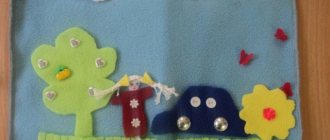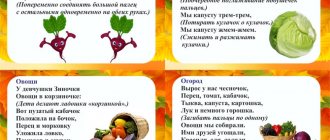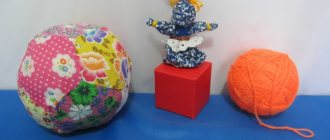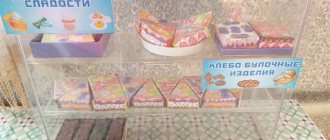Subject development environment for mathematics in preschool educational institutions
Subject development environment
in mathematics at preschool educational institution
The Federal State Educational Standard for Preschool Education establishes requirements for a developing subject-spatial environment as one of the conditions for the implementation of the main educational program of preschool education.
A developing subject-spatial environment should allow for the organization of both joint activities of the teacher and children, as well as independent children’s activities aimed at the child’s self-development under the supervision and support of an adult.
The innovativeness of the approach to organizing a developing subject-spatial environment for a child’s development is determined by the relevance of integration not only of educational areas defined by the Federal State Educational Standard, but also by the need to organize activity centers on the principles of development and integration.
To implement the educational field “Cognitive Development” through the process of forming elementary mathematical concepts, entertaining mathematics centers are organized in groups of preschool educational institutions.
The center for entertaining mathematics should be equipped with materials and attributes that allow children to practice skills in independent activities, consolidate existing knowledge, and discover new things in the field of mathematics through unique children's activities: gaming, search and research, constructive, speech, etc.
Contents of the center for cognitive development in groups of preschool educational institutions
:
1. A variety of games for the development of sensory senses in accordance with the age and development of children: games for the formation of elementary mathematical concepts of quantity and counting, the size and shape of objects, orientation in space and time.
2.Various counting, visual material: planar object pictures for counting; small toys and objects - nesting dolls, mushrooms, fish, etc.; counting sticks; sets of geometric shapes of different sizes, different colors; natural material for counting; sets of numbers, etc.
3. Entertaining material with mathematical content:
— joke tasks, puzzles, rebuses, games to find similarities and differences, etc.;
— mathematical riddles;
— mathematical counting rhymes;
- mathematical educational, logical games appropriate for the age of children (Nikitin games, Montessori frames, Tangram, Mongolian game, Columbus egg, Vietnamese game, Magic circle, Pentamino, Geokont, Unicube, Dienesh blocks, Cuisenaire sticks, Voskobovich games, etc. )
— assistant devices: magnifying glass, hourglass, magnets, measuring spoons.
2nd junior group (3-4 years)
The center of cognitive development in mathematics can include didactic toys and board games that develop children’s skills:
compare objects according to various criteria - size, shape, color,
purpose
etc.;
Didactic games
.
Select items by color and size
(large, medium and small; 2-3 colors), collect a pyramid from
decreasing in size rings
, alternating in
a certain sequence
-
telnosti
2–3 colors; assemble a picture from 4–6 parts.
In joint didactic games, teach children to perform gradual
but increasingly complex rules.
Didactic games: “Loto”, paired pictures, large and medium plastic mosaics, for example: “Geometric Shapes”, puzzles from 6 to 18 parts, sets of cut pictures on cubes, pictures - stencils: “Fold the flower”, “Fold the Christmas tree”, “Build a house with a window (for a cockerel)”, “Wonderful bag”, etc.
Middle group (4 – 5 years old)
The Center for Cognitive Development in Secondary Mathematics may contain:
didactic toys and board games that develop children’s skills:
- navigate in space and time
;
- compare objects based on various characteristics - size, shape, color
,
purpose
, etc.;
- make rows of identical objects in descending or ascending order of one or another characteristic: volume, height, color intensity
etc.;
Didactic games
:
-games for understanding symbolism, schematics and conventions (“What does it look like?”, “Complete”);
-models: numerical ladder, a series of quantities, spiral models for the knowledge of time relations
;
-games for mastering magnitude, numerical, space-time
relationships
(“Make the same pattern”);
-games with algorithms, including 3-5 elements (“Growing a Tree”), etc.
Educational games
: “Fold the pattern”, “Dots”, “Corners”, “Unicube”, “Denes Blocks”, “Cuisenaire Sticks”, Montessori frames, etc. in accordance with age goals.
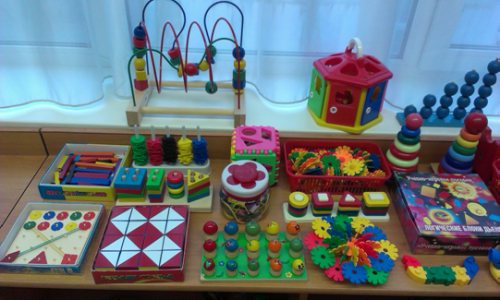
Older group (5 – 6 years old)
In senior preschool age groups, an entertaining mathematics center may contain:
Stencils, rulers and other measuring standards;
didactic games that develop skills:
—create sets
(groups of objects) from elements of different quality (objects of different colors, sizes, shapes, purposes; sounds, movements);
the ability to understand the relationship of adjacent numbers
;
the ability to establish the sequence of various events.
Didactic games
:
- games for dividing a whole object into parts and composing a whole from parts (“Fractions”, “Make a circle”);
- games with numbers, coins;
— games for the development of numerical concepts and the ability to quantify different quantities. (“Compare and match”);
- Games with algorithms).
— Models of numerical and temporal relations (“Number ladder”, “Days of the week”).
— Calendar, calendar model.
Educational games:
- games that develop mental processes: chess, checkers, backgammon, lotto-barrels, etc.
designer watch, scales;
- Nikitin’s games, Dienesh’s blocks, Cuisenaire’s sticks, Voskobovich’s games, etc. in accordance with age-related tasks - Nikitin’s games, Dienesh’s blocks, Cuisenaire’s sticks, Voskobovich’s games.
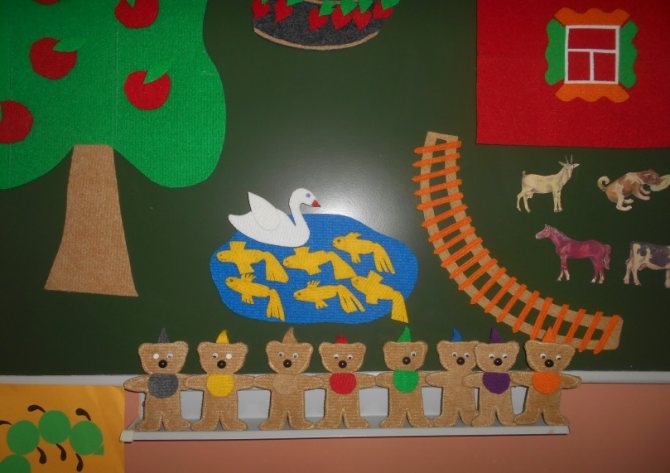
Preparatory group (6 – 7 years old)
In groups of senior preschool age, the center for cognitive development in mathematics may contain:
didactic games that develop skills:
ability to navigate in a limited area
(sheet of paper, notebook page, etc.);
ability to work with a plan, diagram, route
;
the ability to “read” simple graphic information
;
ability to tell time using a clock;
the ability to analyze the shape of objects
as a whole and its individual parts
;
ability to name numbers in forward and reverse order
.
Stencils, rulers and other measuring standards.
Didactic games
:
- games for dividing a whole object into parts
and
composing a whole from parts
(“Fractions”, “Make a circle”);
- games with numbers, coins;
— games for developing numerical concepts
and the ability to quantify different quantities. (“Compare and match”);
- games with algorithms).
— models of numerical and temporal relations (“Number ladder”, “Days of the week”).
— Calendar, calendar model.
Educational games:
- games that develop mental processes: chess, checkers, backgammon, lotto-barrels, etc.
designer watch, scales, magnifying glass, tape measure;
- Nikitin’s games, Dienesh’s blocks, Cuisenaire’s sticks, Voskobovich’s games, etc. in accordance with age-related tasks.
Stencils, rulers and other measuring standards.
P.S.: (All photographs from the personal archive of Natalia Petrovna Leonova)
Literature:
1. Nishcheva N.V. Subject-spatial developmental environment in kindergarten. – St. Petersburg. : “Childhood-Press”, 2006
2. Smirnova E.O. Kindergarten. Assessment of the subject-development environment. //Preschool education.- No. 4, 2010.
3. FROM BIRTH TO SCHOOL. Approximate general education
preschool education program / Ed. N. E. Veraksy, T. S. Ko-
Marova, M.A. Vasilyeva. — M.: MOSAIC$SYNTHESIS, 2014.
The relevance of logical and mathematical zones in preschool institutions
The rapid development of science and high technology these days requires educational institutions to take a new approach to teaching the younger generation. They should not only equip children with knowledge and skills, but also develop life competencies, without which it is impossible to become successful and in demand in the modern world:
This work begins in preschool educational institutions (DOU). Modern exemplary educational programs proclaim one of the most important tasks of a preschool institution is the formation of a comprehensively developed, creative individual striving for active knowledge of the world around him. An important component of the comprehensive development of a child is logical and mathematical. And, in turn, zones of logical and mathematical development (mathematical corners) are a necessary part of the general developmental environment in a preschool educational institution.
Selection of interesting material
Interesting mathematical material is not so easy to find, but with basic guidelines, you can cope with any task. This is especially true for young teachers who come to work in kindergarten for the first time. In order to avoid mistakes, they should seek help from older, experienced colleagues, study the design of their mathematical corners, and on what basis they should perform their own. First of all, it is necessary to take into account the age of the pupils and the characteristics of this period in the children’s lives. By combining this knowledge, the teacher will be able to choose the right methodology and develop his own unique mathematical corner.
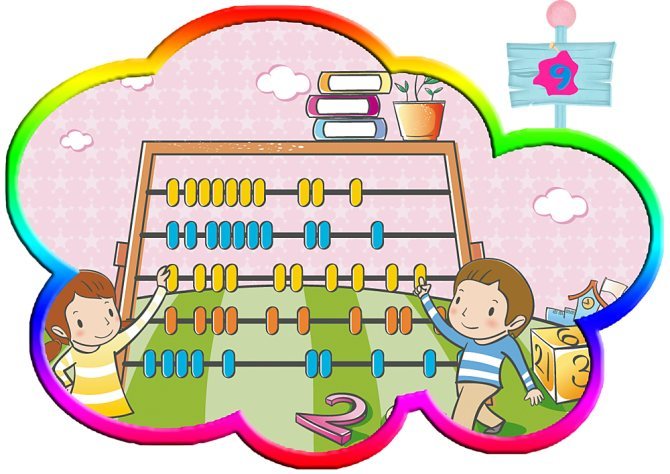
Love math
In a preschool educational institution, it is very important for the teacher to do everything possible to instill in children an interest in mathematics. Then they won’t have problems with this science in the future
In addition, well-prepared children, with developed abstract-logical thinking, will be more successful in school, not only in mathematics lessons, but also in other classes. Mathematics develops the ability to think, and this is the main skill that is useful in all areas.
Decorating a corner with your own hands
The children's activity corner should be cozy and pleasant for the pupils to be in. The colorful design, the use of plots and characters familiar to children, and the addition of stickers and drawings to the shelves evoke positive emotions.
Elements of the teacher’s independent design of children’s corners with the involvement (optional) of parents and students themselves:
- drawing thematic wall newspapers and posters;
- creating simple decorations: origami figures, kusudama, paper flowers, snowflakes, butterflies and lanterns;
- creating a corner in the style of a literary work or cartoon;
- decoration with natural materials: bouquets of dried flowers, baskets and boxes of twigs, figurines of acorns;
- execution of layouts: “Our Street”, “Railway”, “Volcano”, “Solar System”, “Island Structure”, “Jungle”, “Christmas”, etc.;
- preparation of mini-exhibitions from the works of students;
- production of puppets for finger and shadow theater, masks;
- drawing scenery for gaming and theatrical activities;
- development of tasks for didactic games: cutting out cards and chips, ruling forms, etc.
An option for decorating corners using hand-made images of characters familiar to children - fairy-tale gnomes
Basic corner design tools
- Information stand: topics for upcoming classes in the activity center, announcements, photographs are posted here;
- signs and emblems: these are names of corners, designations of playing conditions, samples of special symbols (Olympic, scientific);
- inscriptions and landmarks: assistance in independently finding the necessary materials, the order of actions;
- wall newspapers and articles: demonstrating the relevance of activities in this direction, giving importance to children's activities;
- pictures, illustrations: create a pleasant atmosphere and comfort, act as auxiliary material in studying the topic.
